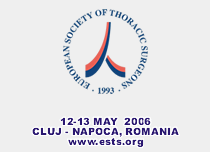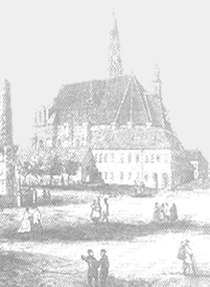|
|
|
|
|
|
|
|
|
Travel Information: by car |
|
 |
If you will choose to enjoy a driving experience in order to arrive to
CLUJ-NAPOCA, then these are the main itineraries that will get you here and
also a few tips for the road:
On Romanian territory we would recommend the following gas stations:
Shell, Mol, OMV, Petrom. You will be able to locate them in every Romanian
city mentioned bellow.
Also on the Romanian roads there are a few things that you will have to
pay attention to:
|
|
|
|
|
| |
 Farm animals that may often appear on the side of the road and
are very
Farm animals that may often appear on the side of the road and
are very
unpredictable;
 Wagons that are not always properly lit and move with a very low
speed;
Wagons that are not always properly lit and move with a very low
speed;
 Holes that may appear on the road especially in the cities;
Holes that may appear on the road especially in the cities;
 Thieves who may take advantage of you leaving the car open in a
gas
Thieves who may take advantage of you leaving the car open in a
gas
station or during a stop on the road. |
|
|
| From: |
|
|
BUDAPEST: |
M5 - (follow the
Szeged sign for 42 km)
 KM 42 (follow the Albertirsa sign for 16 km)
KM 42 (follow the Albertirsa sign for 16 km)
 ALBERTIRSA
ALBERTIRSA
 E60/4 - 46 km
E60/4 - 46 km
 SZOLNOK
SZOLNOK
 E60 (follow DEBRECEN sign) – 66 km
E60 (follow DEBRECEN sign) – 66 km
 PUSPOKLANDANY
PUSPOKLANDANY
 E60 - 75 km
E60 - 75 km
 ARTANY (Hungarian Custom)
ARTANY (Hungarian Custom)
 E60
E60
 BORS (Romanian Custom)
BORS (Romanian Custom)
 E60 - 13 km
E60 - 13 km
 ORADEA
ORADEA
 E60 - 155 km
E60 - 155 km
 CLUJ-NAPOCA.
CLUJ-NAPOCA.
Total distance: 413 km
|
|
 |
On this route there are two possible traps. Here are the tips:
a) Pay attention to the exit from M5(Budapest Highway) at KM 42
because it is not
properly signaled.
b) Leaving Puspoklandany you have to be careful not to continue
on E60/4 to
Debrecen. |
|
|
|
|
 |
On
this itinerary you will be able to admire the sight of the
Danube in Budapest, and pass by the smooth curves of the
Romanian Apuseni Mountains. The most important city on the road
is Oradea where you can find The Romano-Catholic Basilica, the
greatest baroque monument in the country built during 1752 -
1780.
|
|
|
BEOGRAD: |
IR7 - 60 km
 ZREJANIN
ZREJANIN
 IR7 - 60 km
IR7 - 60 km
 JIMBOLIA (Romania Custom)
JIMBOLIA (Romania Custom)
 NR 59A - 43 km
NR 59A - 43 km
 TIMISOARA
TIMISOARA
 E671 – 50 km
E671 – 50 km
 ARAD
ARAD
 E671 – 110 km
E671 – 110 km
 ORADEA
ORADEA
 E60 – 155 km
E60 – 155 km
 CLUJ-NAPOCA.
CLUJ-NAPOCA.
Total distance: 478 km
|
 |
Coming from BEOGRAD you will be able to visit Timisoara, the town
where the 1989 Revolution first started. It is one of the most
evolved cities of Romania, very close to European standards and
values.
If you need a rest or a good hot meal on this
route you will be able to stop here:
a) On the road from Arad to Oradea, you will find on the right
side of the road the Madaras Hotel with a very good restaurant;
b) On the road from Oradea to Cluj, there is a stop in Piatra
Craiului where you can enjoy the traditional Romanian “mititei”.
|
| |
|
|
BUCHAREST: |
E60 – 60 km
 PLOIESTI
PLOIESTI
 E60 – 115 km
E60 – 115 km
 BRASOV
BRASOV
 E60 – 110 km
E60 – 110 km
 SIGHISOARA
SIGHISOARA
 E60 – 52 km
E60 – 52 km
 TARGU-MURES
TARGU-MURES
 E60 – 106 km
E60 – 106 km
 CLUJ-NAPOCA.
CLUJ-NAPOCA.
Total distance: 443 km
|
|
 |
The road from Bucharest to Cluj, brings you through the most
important and also spectacular mountain tourist area, the
Prahova Valley. In the upper area of Prahova county,
dominated by Bucegi Mountains, there is a chain of resorts, the
best choice for going to the mountains, skiing, climbing,
camping, fight the bears, do extreme sports, or just for
visiting the castles, relaxing and meeting other people. |
| |
|
|
SOFIJA: |
E83 – 150 km
 PLEVEN
PLEVEN
 E83 – 90 km
E83 – 90 km
 BJALA
BJALA
 E85 – 61 km
E85 – 61 km
 RUSE (Bulgarian Custom)
RUSE (Bulgarian Custom)
 E70
E70
 GIURGIU (Romanian Custom)
GIURGIU (Romanian Custom)
 E70 – 67 km
E70 – 67 km
 BUCURESTI
BUCURESTI
 E60 – 443 km
E60 – 443 km
 CLUJ-NAPOCA.
CLUJ-NAPOCA.
Total distance: 811 km
|
|
 |
Though at times it is easy to believe that Bucharest is actually
little except endless blocks, there is in fact a multitude of
things to see. That history has not been kind to Romania is in
fact the visitor's luck. Few other cities in Europe have seen as
much trouble as Bucharest in recent years, and if it's bullet
holes you are after, you have come to the right place (Piata
Revolutiei, to be precise). But there is also a panoply of
excellent museums, art galleries and not a few oddities. You
will not regret reserving an afternoon or morning to see some of
all this on your road to CLUJ-NAPOCA. |
| |
|
|
CHISINAU: |
E581 – 97 km
 LEUSENI (Moldova Custom)
LEUSENI (Moldova Custom)
 71 km
71 km
 IASI
IASI
 53 km
53 km
 TARGU FRUMOS
TARGU FRUMOS
 37 km
37 km
 PASCANI
PASCANI
 47 km
47 km
 FALTICENI
FALTICENI
 22 km
22 km
 SUCEAVA
SUCEAVA
 E576 – 75 km
E576 – 75 km
 CAMPULUNG MOLDOVENESC
CAMPULUNG MOLDOVENESC
 E576 – 135 km
E576 – 135 km
 BISTRITA
BISTRITA
 E576 – 50 km
E576 – 50 km
 DEJ
DEJ
 E576 – 61 km
E576 – 61 km
 CLUJ-NAPOCA.
CLUJ-NAPOCA. Total distance: 648 km
|
|
 |
Come from Chisinau by car and all of Bucovina Country will be at
your feet, with its monasteries and its gentle people. Widely
known and appreciated for its famous painted churches and its
monasteries, the Upper Moldavian Country gathers in its
patrimonial treasure nature and human accomplishments. |
|
|
|
ISTANBUL |
A. E80 – 241 km
 EDIRNE
EDIRNE
 E80 – 108 km
E80 – 108 km
 HASKOVO
HASKOVO
 E85 – 191 km
E85 – 191 km
 VELIKO TARNOVO
VELIKO TARNOVO
 E85 – 106 km
E85 – 106 km
 RUSE (Bulgarian Custom)
RUSE (Bulgarian Custom)
 E70
E70
 GIURGIU (Romanian Custom)
GIURGIU (Romanian Custom)
 E70 – 67 km
E70 – 67 km
 BUCHAREST
BUCHAREST
 E60 – 443 km
E60 – 443 km
 CLUJ-NAPOCA.
CLUJ-NAPOCA.
Total distance: 1156 km
B.
E80 – 170 km
 BABAESKI
BABAESKI
 E87 – 68 km
E87 – 68 km
 MALKO TARNOVO (Bulgarian Custom)
MALKO TARNOVO (Bulgarian Custom)
 E87 – 133 km
E87 – 133 km
 BURGAS
BURGAS
 E87 – 137 km
E87 – 137 km
 VARNA
VARNA
 E87 – 170 km
E87 – 170 km
 CONSTANTA
CONSTANTA
 E60 – 82 km
E60 – 82 km
 HARSOVA
HARSOVA
 E60 – 60 km
E60 – 60 km
 SLOBOZIA
SLOBOZIA
 E60 – 63 km
E60 – 63 km
 URZICENI
URZICENI
 D1 – 63 km
D1 – 63 km
 PLOIESTI
PLOIESTI
 E60 – 115 km
E60 – 115 km
 BRASOV
BRASOV
 E60 – 258 km
E60 – 258 km
 CLUJ-NAPOCA
CLUJ-NAPOCA
Total distance: 1319 km
|
 |
Coming from Istanbul you may chose to visit the Golden Sands of
Varna. The gem of the Bulgarian Black Sea is situated at the end
of the big Varna Bay, with a convenient and well conserved water
area. The city's peculiar sea charm is sublime and moving.
Ancient, medieval, renaissance and modern cultures mingle and
coexist throughout the city. Apart from being a beach resort,
Varna rivals the great cities of Sofia and Plovdiv, in its
offering of cultural attractions and historical buildings,
museums and art galleries.
If you chose the Constanta route, then you will also get a
glimpse of the Romania Black Sea Coast. This is the main tourist
area, considering the large number of Romanian and foreign
tourists. The Romanian "Riviera", which is 50 km long, is made
up of a continuous belt of 16 seaside resorts (some of them
being also spas), out of which six are in high demand: Mamaia,
Eforie Nord, Costinesti (the resort of the youth), Neptun (the
favorite holiday place of former dictator Ceausescu), Olimp,
Venus, 2 Mai, all of them built after 1960. Tourists can visit
also the vestiges of the three colonies which were founded there
by ancient Greeks in the seventh - sixth centuries BC: Histria
to the north, Tomis in the centre (the present-day Constanta,
which is the main Romanian sea port, boasting an imposing
archaeological museum) and Callatis (the present-day Mangalia),
and also the monument from Adamclisi (100 km west). Besides the
ordinary cure factors, there are here natural lakes with
therapeutic mud. Lake Techirghiol is most appreciated and
several sanatoriums were built around it.
|
|
|
|
|
HAVE A SAFE TRIP! |
|
|
|
 |
|
|
 |





